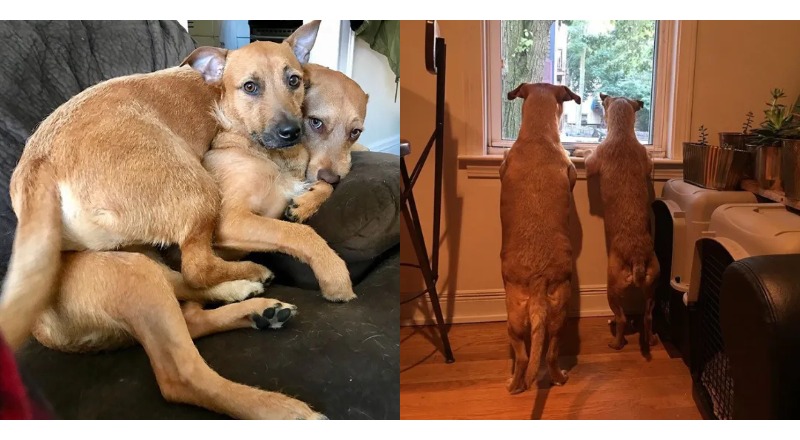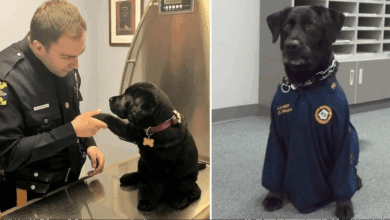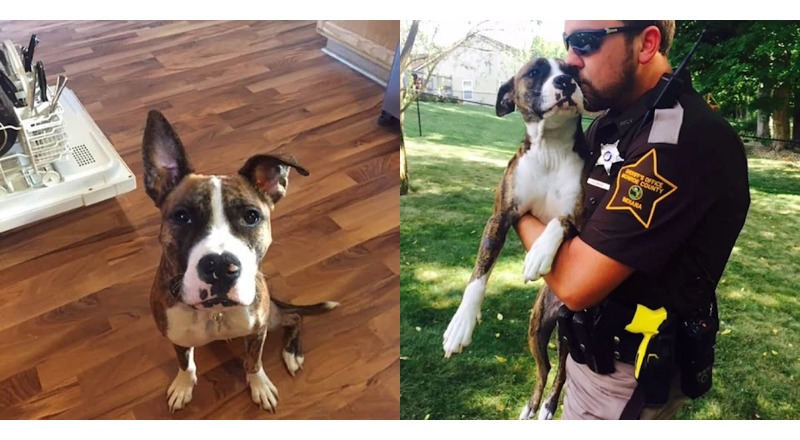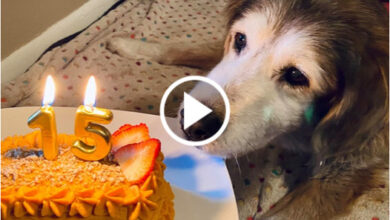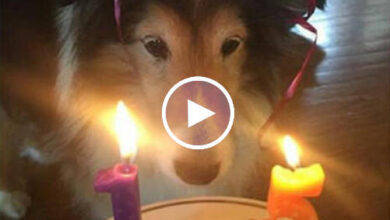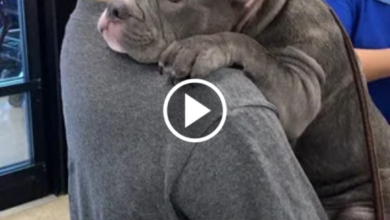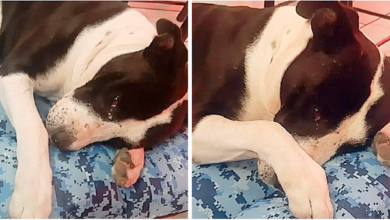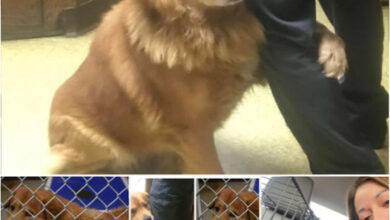How To Work From Home With Dog

If you’re like many people, you’ve recently found yourself working from home due to the COVID-19 pandemic. While this can be a great opportunity to spend more time with your furry friend, it can also present some challenges. How do you balance work responsibilities with your dog’s needs? How do you keep them entertained and happy while staying focused on work?
In this article, we’ll explore some practical tips for working from home with your beloved pet.
First and foremost, it’s important to establish a routine for your dog. Dogs thrive on routine and structure, so try to stick to a consistent schedule each day. This includes designated times for feeding, potty breaks, exercise, and playtime. Creating a routine will not only help keep your dog happy and healthy but also make it easier for you to plan out your workday around their needs.
With a little bit of planning and patience, working from home with your furry pal can be an enjoyable experience for both of you!
Establish a Routine for Your Dog
You can make working from home with your furry companion a seamless experience by establishing a routine for your dog that not only provides structure but also deepens the bond between you and your loyal friend.
Developing consistency in your daily activities will help to reduce any potential disruptions caused by your pooch. For example, if you usually take your dog out for a walk before starting work, try to stick to this routine every day. This way, they’ll come to expect it and won’t interrupt you when you’re trying to focus on tasks.
Setting boundaries is another important aspect of creating a successful routine for both you and your dog. If there are certain areas in your house where you don’t want them to go, be clear about it from the outset. Use baby gates or closed doors if necessary to establish physical boundaries, and train them using positive reinforcement techniques so that they understand what’s expected of them.
This will help keep distractions at bay while allowing them to feel comfortable within their designated space.
Creating a designated workspace is essential when working from home with pets. By setting up an area that’s specifically designated for work, you’ll be able to concentrate better without worrying about interruptions or distractions caused by your furry friend roaming around the house unchecked.
With these routines in place, both you and Fido can have an enjoyable time working together!
Create a Designated Workspace
Setting up a designated workspace in your house is crucial for maintaining productivity and focus throughout the day. Creating a space that is comfortable, organized, and ergonomically sound can help you work more efficiently and prevent physical strain.
Here are some tips to consider when designing your home office:
- Keep it organized: Clutter can be distracting and make it difficult to stay focused on work tasks. Invest in storage solutions such as file cabinets, shelves, or desk organizers to keep everything in its place.
- Consider ergonomic considerations: Prolonged sitting can lead to back pain, neck stiffness, and other discomforts. Choose a chair with good lumbar support, position your monitor at eye level, and use an ergonomic keyboard or mouse if necessary.
- Create a pet-friendly work environment: If you’re working from home with your furry friend by your side, make sure they have their own designated spot within the workspace. Consider some furniture and decor ideas like pet beds or toys that will keep them entertained while you work.
By creating a well-organized workspace that takes into account your physical needs as well as those of your pet, you’ll be able to remain productive even with distractions around you. However, training and socializing your dog is also important for ensuring they don’t disrupt your workflow – let’s explore this next step together!
Train and Socialize Your Dog
Creating a well-behaved and sociable furry companion is like sculpting a masterpiece; it requires patience, discipline, and consistency. As you work from home with your dog by your side, take the opportunity to train and socialize them.
Dog training techniques such as positive reinforcement can help shape good behavior while encouraging obedience. To start, establish basic commands like sit, stay, come, and leave it. Use treats as rewards for following through with these commands. It’s essential to be consistent in your training efforts so that they become ingrained in your dog’s behavior.
Socialization strategies are also crucial in helping your dog become comfortable around people and other animals. Make sure to expose them to different environments such as parks or pet-friendly cafes. Introduce them to new people of all ages so that they learn how to interact appropriately with humans.
Once you’ve established good behavior patterns, move on to incorporating interactive toys and treats into their routine for added stimulation during work breaks. Remember that every dog is unique and may require different approaches when it comes to training and socialization. Keep observing your furry friend’s behavior closely so that you can make adjustments accordingly.
With time and effort invested in their development, you’ll be rewarded with a well-trained companion who’ll make working from home a breeze!
Use Interactive Toys and Treats
To keep your dog entertained while working from home, it’s important to use interactive toys and treats. These will encourage mental stimulation and provide a fun way for your pup to pass the time.
Plus, they can also be used as rewards for good behavior during those long workdays. So go ahead and stock up on some engaging toys and tasty treats – your furry friend will thank you!
Keep Your Dog Entertained
While you’re working, it’s important to keep your furry companion entertained so they don’t become bored or restless. Here are a few tips to help keep your dog occupied:
- Create a designated play area for your dog with plenty of toys and interactive games.
- Rotate their toys frequently to keep them interested and engaged.
- Consider investing in puzzle toys that challenge their problem-solving skills.
In addition to keeping your dog entertained, it’s also important to encourage mental stimulation. With the right tools and techniques, you can help promote a healthy mind and body for your furry friend.
Encourage Mental Stimulation
If you want your furry friend to stay mentally sharp and engaged, try incorporating puzzle toys and games that challenge their problem-solving skills. You can find a variety of dog puzzles on the market that range from simple treat-dispensing toys to more complex interactive games.
These types of enrichment activities not only keep your dog entertained but also provide mental stimulation, which is important for their overall well-being. In addition to puzzle toys, you can also create your own DIY enrichment activities at home.
For example, hide treats around the house or garden and encourage your dog to find them using their sense of smell. Another idea is to freeze some peanut butter or yogurt in a Kong toy and give it to your dog as a fun snack that they need to work for. By providing your furry friend with mental challenges through various activities, you are helping them stay happy, healthy and content at home.
To keep building on this positive experience with your pet, reward good behavior through praise or small treats. This’ll help reinforce the positive behaviors they exhibit while enjoying these new puzzle toys and other enrichment activities.
Reward Good Behavior
Rewarding good behavior is crucial in reinforcing positive habits and strengthening the bond between pet and owner. By implementing positive reinforcement techniques, you can help your dog understand what behaviors you desire from them. Here are some tips to help you reward good behavior:
- Use treats: Dogs love to be rewarded with tasty treats, so keep a stash of their favorites on hand.
- Give verbal praise: A simple “good boy/girl!”or “well done!”can go a long way in letting your dog know they’re doing something right.
- Offer physical affection: Pets love physical touch, such as belly rubs or scratches behind the ears.
- Playtime: Incorporate playtime as a reward for good behavior. This not only reinforces positive habits but also provides mental stimulation.
Setting clear boundaries is also important when it comes to rewarding good behavior. Make sure your dog understands what behaviors are acceptable and which ones are not by consistently enforcing rules and consequences for misbehavior.
Now that you’ve learned about implementing positive reinforcement and setting clear boundaries, it’s time to take breaks with your furry friend!
Take Breaks with Your Dog
Taking breaks with your furry friend can help boost productivity and alleviate stress – who wouldn’t want to spend a few minutes playing fetch or cuddling their pup during the workday?
Incorporating dog-friendly breaks into your work routine not only benefits your pet but also allows you to recharge and refresh, resulting in increased focus when returning to your tasks. You can even integrate exercise routines for both you and your dog, such as going for a short walk or doing some yoga stretches together.
It’s important to remember that taking breaks with your dog doesn’t have to be limited to physical activity. Spending some quiet time together, like reading a book while snuggling with your pup on the couch, can also help reduce stress levels. Don’t underestimate the power of simply enjoying each other’s company!
If you find it challenging to balance work and taking care of your furry friend, consider doggy daycare or hiring a dog walker. This way, you can ensure that your pet is getting the attention and care they need while allowing yourself the time and space to focus on work without any distractions.
With these options available, there’s no reason why working from home with a dog shouldn’t be stressful!
Consider Dog Daycare or a Dog Walker
You deserve some peace of mind while you focus on your tasks, so why not entrust the care of your furry companion to a trusted doggy daycare or walker?
Doggy daycare can be a great option if you have a high-energy dog that needs constant attention and stimulation. On the other hand, a dog walker may be more suitable for dogs who prefer one-on-one attention and are content with shorter walks.
When it comes to finding reliable help, do your research! Ask friends and family for recommendations or search online for reviews of local businesses. Make sure to interview any potential candidates and ask about their experience, qualifications, and how they handle different situations. Additionally, consider doing a trial run to see how your dog reacts to the new environment or person.
Remember that every dog is unique and may require different levels of care. Don’t hesitate to switch things up if something isn’t working out. Being patient and flexible is key when it comes to working from home with your furry friend by your side.
By being open-minded about different options for caring for your furry friend during work hours, you can find what works best for both you and your pet. However, even with reliable help in place, it’s important to remember that working from home with a dog requires patience and flexibility on both ends – which we’ll explore next.
Be Patient and Flexible
When working from home with your dog, it’s important to be patient and flexible. You’ll need to adjust to your dog’s needs and communicate with your employer about any challenges that may arise.
But don’t forget to enjoy the benefits of having a furry companion by your side while you work.
Adjust to Your Dog’s Needs
Don’t worry about your dog being too needy during work hours; with some preparation, they’ll learn to adjust to their new routine and become more independent. To help them do this, it’s important to understand your dog’s behavior and establish clear boundaries. Here are a few tips to get started:
- Create a designated workspace for yourself. This will help your dog understand that when you’re in that area, it’s time for work and not play.
- Stick to a consistent schedule. Dogs thrive on routine, so try to keep their feeding, exercise, and potty breaks at the same time every day.
- Provide plenty of mental stimulation. Leave toys or puzzles for them to play with throughout the day, or consider hiring a dog walker or pet sitter for mid-day visits.
By taking these steps, you can help your furry friend settle into their new work-from-home routine.
As you adjust to working from home with your dog by your side, it’s also important to communicate with your employer about any challenges or needs you may have.
Communicate with Your Employer
It’s essential to keep an open line of communication with your employer regarding any concerns or needs that may arise while working remotely with your furry companion. This includes addressing boundaries and setting expectations for both you and your dog during work hours.
Let your employer know if you need a few minutes here and there to take care of your dog’s needs, such as a quick walk or feeding time. Be transparent about how you plan to manage any potential distractions from your pet, but also recognize that unexpected interruptions may occur from time to time.
When communicating with your employer, emphasize the benefits of having your dog around while working from home. Dogs have been proven to reduce stress levels, increase productivity, and boost morale. By being upfront about how you plan on balancing work responsibilities with caring for your pet, you can ensure a happy and productive environment for everyone involved.
With these considerations in mind, it is possible to create a harmonious balance between work and life when working remotely alongside our four-legged friends.
Enjoy the Benefits of Working from Home with Your Dog
As you sit at your desk, your furry companion curls up at your feet, providing companionship and comfort as you tackle your daily tasks.
One of the benefits of remote work for pet owners is the ability to have their furry friends by their side throughout the day. Not only do pets provide emotional support and stress relief, but they also help reduce feelings of isolation that can come with working from home.
However, it’s important to remember that balancing work responsibilities and pet care can be challenging. To ensure you’re able to enjoy the benefits of working from home with your dog while still being productive, try setting boundaries and establishing a routine.
This may include taking breaks throughout the day for walks or playtime, designating a specific area for your dog during work hours, and communicating with colleagues about any potential distractions. With some planning and effort, you can successfully navigate both work obligations and pet responsibilities while enjoying the many perks of remote work with your furry friend by your side.
Conclusion
Congratulations! You’ve made it to the end of this article on working from home with your dog. By now, you’ve learned a few tips and tricks that can help you stay productive while keeping your furry friend happy and healthy.
But here’s the thing: even though we’ve covered everything from establishing a routine to using interactive toys, there’s no guarantee that your dog will behave perfectly every day. In fact, as any dog owner knows, there will be days when your pup decides to bark during an important call or chew on your favorite shoes instead of their designated toy.
So what’s the ironic conclusion? Despite all our best efforts and intentions, sometimes working from home with a dog is just…well, unpredictable. But as long as you’re patient and flexible (and maybe invest in some noise-canceling headphones), you’ll find that having a furry companion by your side is well worth the occasional interruption.
Happy working (and playing) with your pup!
Read more:




